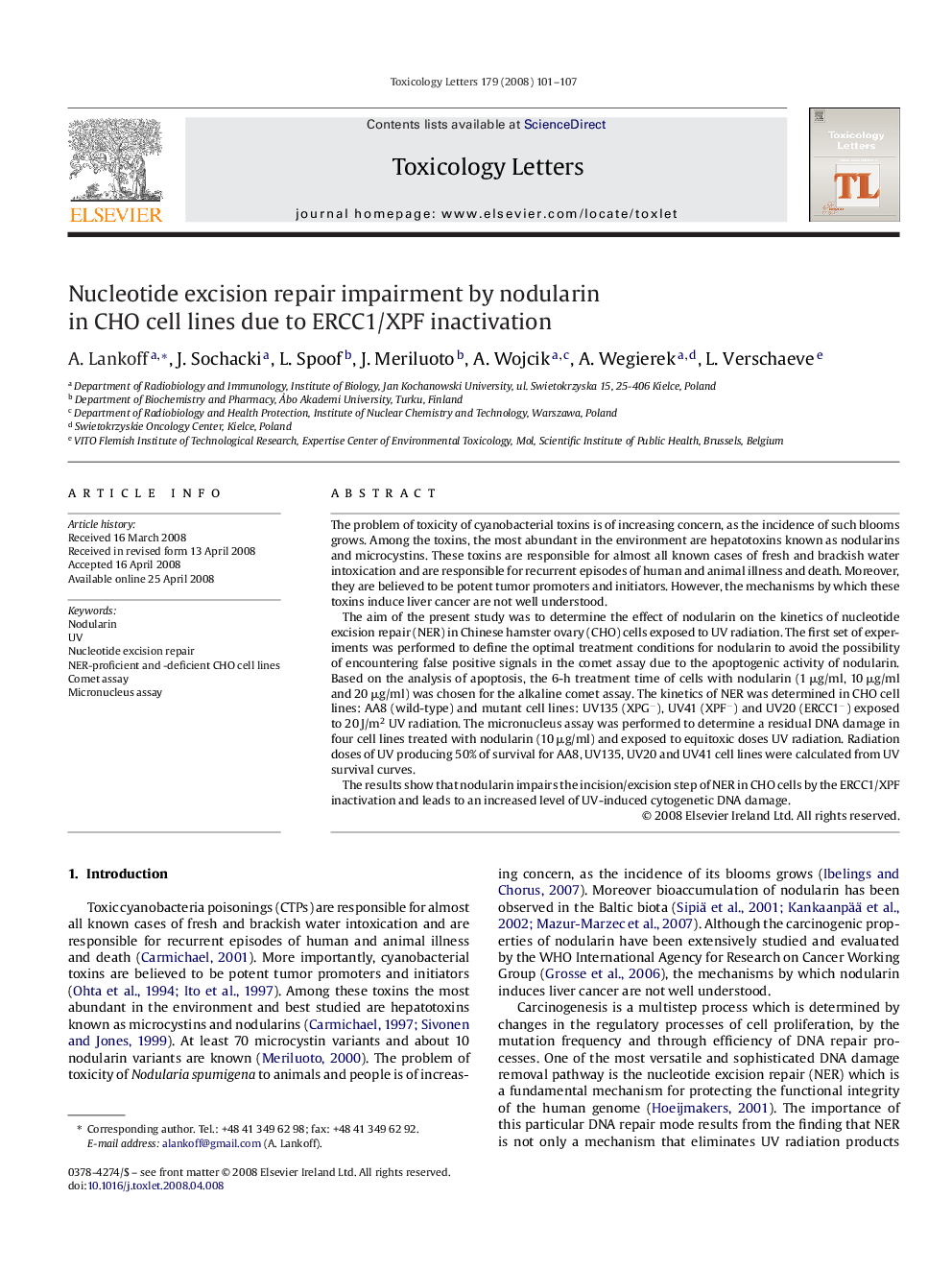| Article ID | Journal | Published Year | Pages | File Type |
|---|---|---|---|---|
| 2601377 | Toxicology Letters | 2008 | 7 Pages |
The problem of toxicity of cyanobacterial toxins is of increasing concern, as the incidence of such blooms grows. Among the toxins, the most abundant in the environment are hepatotoxins known as nodularins and microcystins. These toxins are responsible for almost all known cases of fresh and brackish water intoxication and are responsible for recurrent episodes of human and animal illness and death. Moreover, they are believed to be potent tumor promoters and initiators. However, the mechanisms by which these toxins induce liver cancer are not well understood.The aim of the present study was to determine the effect of nodularin on the kinetics of nucleotide excision repair (NER) in Chinese hamster ovary (CHO) cells exposed to UV radiation. The first set of experiments was performed to define the optimal treatment conditions for nodularin to avoid the possibility of encountering false positive signals in the comet assay due to the apoptogenic activity of nodularin. Based on the analysis of apoptosis, the 6-h treatment time of cells with nodularin (1 μg/ml, 10 μg/ml and 20 μg/ml) was chosen for the alkaline comet assay. The kinetics of NER was determined in CHO cell lines: AA8 (wild-type) and mutant cell lines: UV135 (XPG−), UV41 (XPF−) and UV20 (ERCC1−) exposed to 20 J/m2 UV radiation. The micronucleus assay was performed to determine a residual DNA damage in four cell lines treated with nodularin (10 μg/ml) and exposed to equitoxic doses UV radiation. Radiation doses of UV producing 50% of survival for AA8, UV135, UV20 and UV41 cell lines were calculated from UV survival curves.The results show that nodularin impairs the incision/excision step of NER in CHO cells by the ERCC1/XPF inactivation and leads to an increased level of UV-induced cytogenetic DNA damage.
